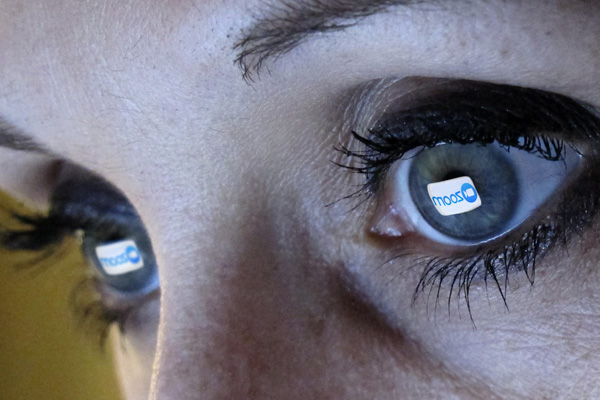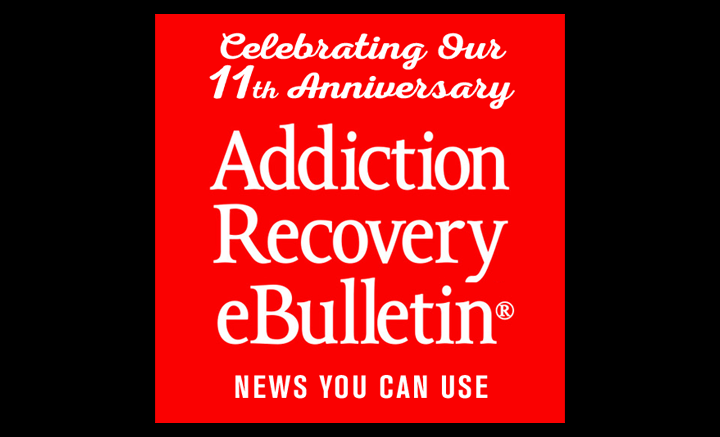by Christopher Dale.
Nicholas had been virtually sober once before … well, virtually anyway. Unfortunately neither the liquor store nor the whiskey nor the inevitable DTs were avatars. They were real, and so was his alcoholism.
Now it was time again, and Nicholas knew it.
The telltale, all-too-familiar signs were back. He was out of a job, out of money, and out of patience. The hangovers, dry heaves and shakes had returned; the friends, family and fiancé had left. His tolerance for alcohol had grown exponentially, while the distance between sincere never-again vows and that first promise-breaking slug was now measured in minutes rather than hours or days.
The progression was frighteningly rapid this go-round. It was less than eight months ago when Nicholas had decided that whatever initial momentum he’d gained from Alcoholics Anonymous had first slowed, then stalled entirely.
Having felt uninspired for months, Nicholas came to the same precarious conclusion as so many former problem drinkers before him: No, he wasn’t an alcoholic after all. If he were, he reasoned, wouldn’t the near-daily meetings make him feel serene, hopeful, grateful? Wouldn’t he feel part of a community, part of a group, part of something greater than himself?
Wouldn’t he feel anything, period?
No, Nicholas wasn’t feeling it. The only thing connecting him to his fellow recovering alcoholics was a laptop and Wi-Fi.
So on September 25, 2040, Nicholas decided to drink again. In moderation, of course.
Of course, moderation hadn’t worked – not even moderately. So Nicholas logged on, shut up, and tried to soak up some of that whiskey with some good ol’ fashioned cyber-sobriety – the only recovery he’d ever known.
_________
It wasn’t always like this. A generation ago, COVID-19 had necessitated, and for the briefest of moments nearly normalized, the online gatherings once known as Zoom Rooms. Today’s old-timers – including Nicholas’ father, Chris – agree that while 2020 was by no means fun while it lasted, at least it was… well, fun-ctional.
Back then, AA members were grateful that technology had progressed just enough to make some semblance of AA possible at a time when congregating in-person simply wasn’t possible. AA had, uncharacteristically, nimbly pivoted to meet a sudden, sobriety-threatening crisis.
But the pandemic waned and the rooms – the real rooms, with real chairs and real coffee and yes, even real people – had returned. Online meetings lingered but languished. Most dissolved as members realized hybrid home groups were little more than robbing Peter to pay Paul – and making it more likely that both would end up drunk.
Following the Great Vaccination of 2021, Zoom rooms remained options, but ones seen for what they were always intended to be: a temporary need turned secondary supplement. In the pandemic’s aftermath, then, cyber-sobriety was widely accepted but relegated to a supporting role; most AA members attended online meetings occasionally, viewing them as a useful means of seeing members who’d moved away, or to get a quick fix of recovery when a busy stretch made physical attendance difficult. AA, a flesh-and-blood experience well before screens were invented, had absorbed moderate screen time without being consumed by it.
But a decade later, another idiot ate another animal unfit for human consumption. COVID-32 made COVID-19 look like a case of the sniffles.
Six … long … years. That’s how long it took from the time President Donald Trump, Jr. recommended snorting AJAX until the day President Bieber announced that a vaccine had finally been developed.
There’s a drastic difference between 16 months and 72. In 2020, AA members forced online knew they were making lemonade from lemons in a situation where nothing was normal. Everything from office life to visiting grandma was suspended, suddenly and indefinitely. People were dying and life was scary.
Against that backdrop, AA members were grateful to be able to meet, period. The inherent imperfections of online gatherings – the lack of eye contact, the forfeiture of ironclad anonymity, the inability to clap, greet or pray in unison – took a backseat to the meetings’ very existence.
And besides, AAs knew this mandated exile wouldn’t last forever. Mere months into the pandemic, promising clinical trials showed the game-changing potential of next-generation vaccine development. Nearly from COVID-19’s inception, then, there was light at the end of the tunnel – even if that tunnel was long, dark and lonely.
And by July 2021 – less than 16 months into the start of large-scale lockdowns – the crisis had abated enough that in-person meetings were back. Years later, old-timers were still boring newcomers with nostalgic tales of their first in-person meetings of the post-pandemic era. The scuffling of folding chairs against the church basement floor. The scent of stale air and fresh coffee. The reverent hush as the meeting officially began with the Serenity Prayer, chanted truly in unison for the first time in more than a year. In AA lore, 2021 is truly the Summer of Love.
But that summer was long gone. With COVID-32 the world locked down anew, outside life went away, and in-person meetings along with it. Online meetings whose attendees were once barely enough to fill a tic-tac-toe board exploded into multiple checkerboards. But as with the last pandemic, no one really thought it would stay that way. The Internet was a backup generator to fuel AA until the crisis abated.
Until it wasn’t.
Even with COVID-19, many had the sneaking suspicion that, despite its clear inferiorities, AA members had grown a bit too comfortable with online meetings. Lockdown life is a casual affair. Formalities like work and school become more free-flowing. AA meetings were no different.
Pandemic postmortems opined about the vaccines arriving just in time to snap society out of a cozy complacency. Everything is softer from our couches – including sobriety.
COVID-19 had buckled the dam; COVID-32 smashed it to pieces.
Like its predecessor, the novel virus had the two attributes epidemiologists feared most: airborne transmission and asymptomatic spread. Unlike COVID-19, COVID-32 killed a full 5% of the people it infected, and vaccine candidates were failing miserably to combat it. The pandemic raged. It took a full year for COVID-19 to kill three million people. COVID-32 doubled that toll in half the time.
Once again our screens were the sole connection to the outside world. Life stopped…
_________
Looking back, it was around the two-year mark – mid-2034 or so – when our collective memories began to fade. With no vaccine in sight and no break in the virus’ violence, maintaining sanity meant accepting the current constrained situation rather than continuing to long, fruitlessly, for the bygone far freer one. In a twist of tragic irony not lost on many AA members, mental survival meant not regretting the past but, regretfully, needing to shut the door on it.
For its part, technology had improved – at least somewhat. What were once Zoom rooms was now a branded platform, VirtuAA, offering, to quote its website, “a robust recovery experience that successfully simulates the in-person meetings we’ve all come to cherish.” Attendees fortunate enough to afford virtual reality headsets and gloves were, again per the website, “whisked away to a 3-D room complete with circular seating arrangements, the familiarity of the 12 Steps and 12 Traditions posted on the walls, and sharing via the program’s traditional hand-raising.” Those without headsets experienced something more comparable to the Microsoft Teams and Webex meetings now a mainstay in office settings around the world.
As two years of lockdowns turned to three and four, two things occurred in AA. First, for obvious reasons more newcomers appeared on screens who’d never been to an in-person meeting.
The second was less apparent but no less real. Simply put, the sheer length of the lockdown took online meetings from a temporary novelty to the new norm. Faced with few alternatives, AA members convinced themselves that VirtuAA was simply the natural evolution of an organization entering its second century of existence.
With no in-person gatherings in sight, AA members gradually succumbed to the same self-preserving deceit that the world at large had swallowed: the notion that physical presence could be replicated in cyberspace. Necessity was the mother of deception: recovering alcoholics needed to consider VirtuAA normal to stay sober … and so it became normal.
Above all, normalization is a choice – even if it seems to be the only choice available. With no in-person meetings on the horizon, AA members chose to believe that the spiritual experience successful recovery required could be attained absent the founders’ intended physical togetherness.
Hugs and hand-holding, chanting and clapping, warm coffee and even warmer eye contact … all went from immediately impossible to permanently unnecessary. Backing up the wisdom of this choice was the fact that most recovering AA members stayed sober.
Well, virtually sober anyway.
_________


